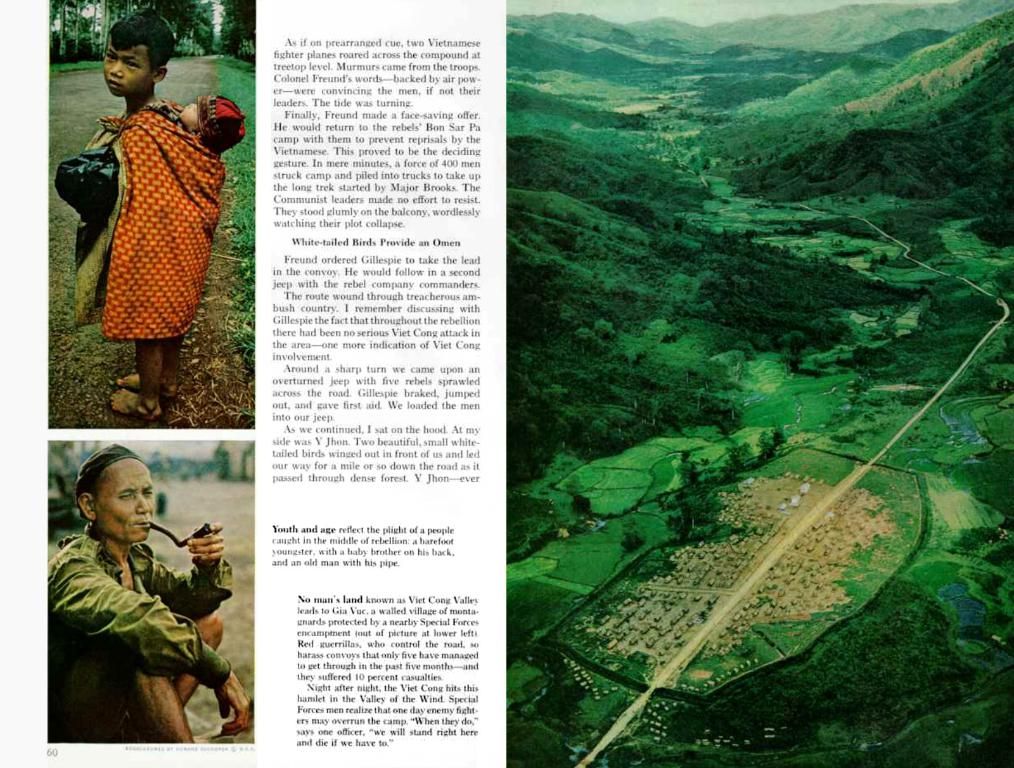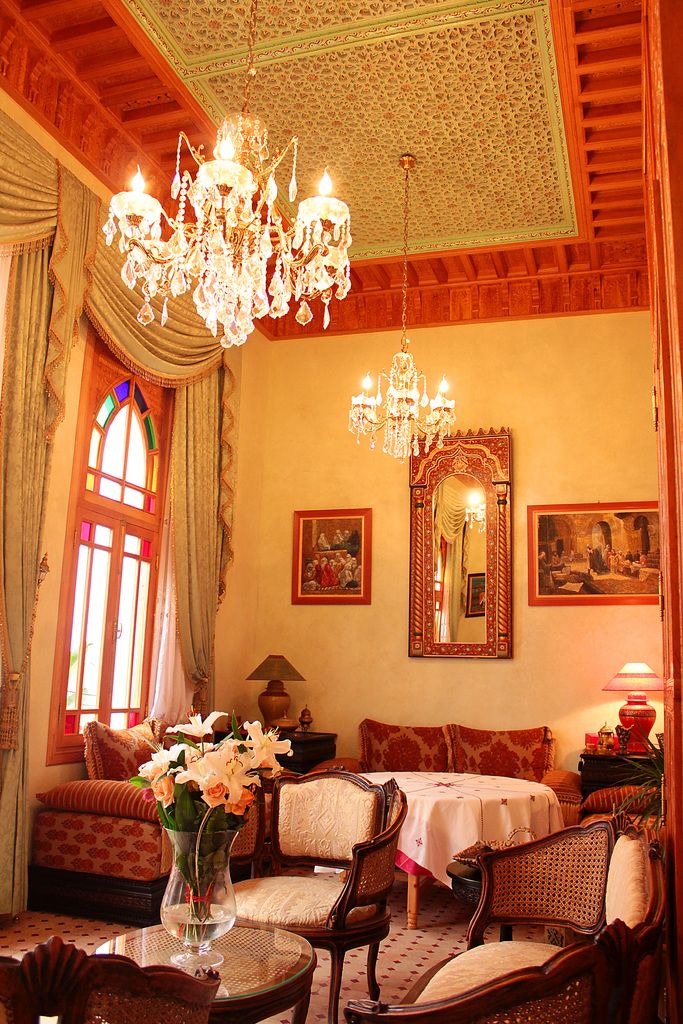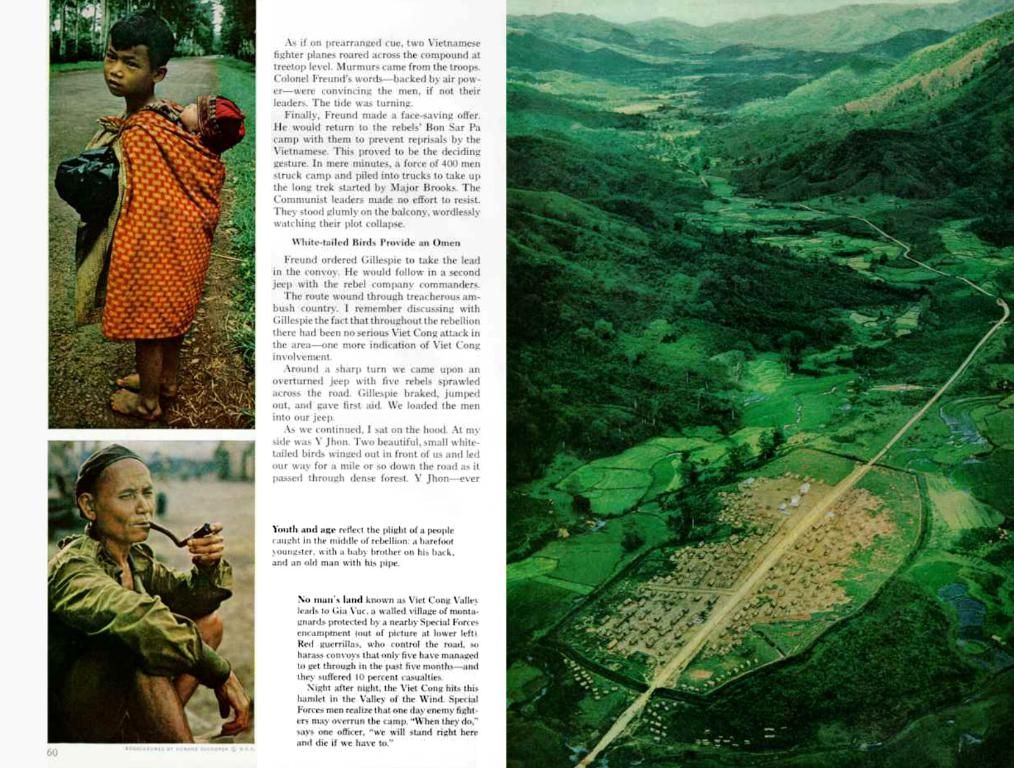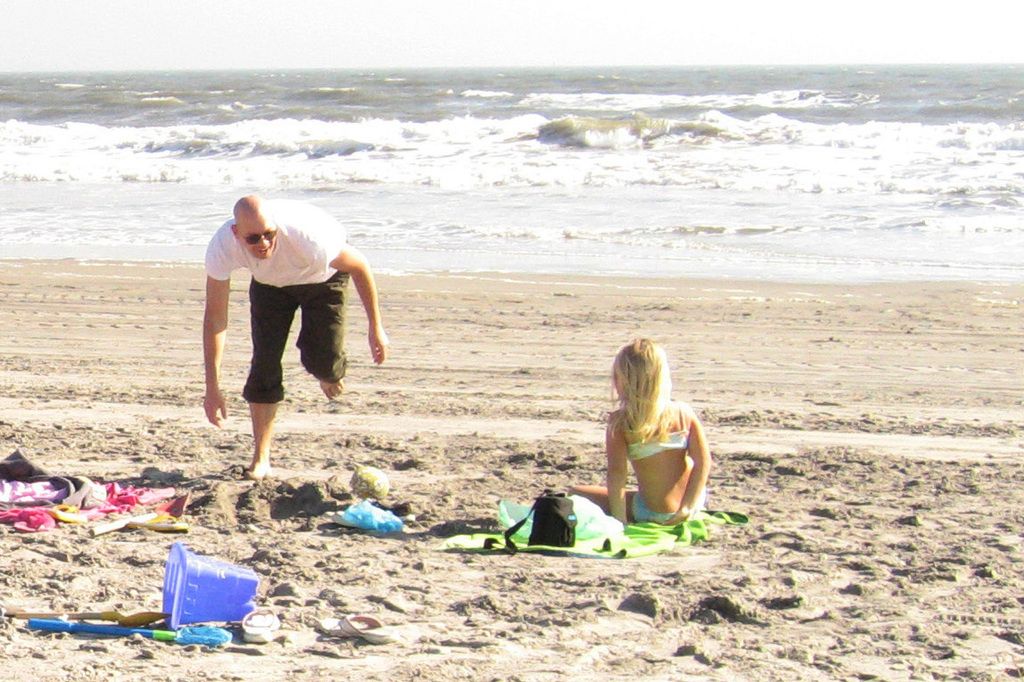Sizzling German Cities: An Unhealthy Amount of Concrete and Insufficient Green Spaces
German Locales Suffering From Intense Heatwave
Let's talk about the sweltering urban jungles in Deutschland! While basking under the sun, 12 million souls bear the brunt of soaring temperatures in various cities across Germany, as per a study by the German Environmental Aid (DUH) [1]. These heat stress-stricken locals reside in over 190 cities, each colored by the combination of sultry temperatures, concrete buildings, and limited green spaces.
Hotspots:The heat load is particularly intense in Germany's southern cities, with Mannheim, Ludwigshafen, and Worms (no, not the fairy-tale towns from Brothers Grimm) emerging as frontrunners on the unwanted leaderboard. These cities suffer from an overwhelming 88 to 91% of their population living in heavily affected areas [1]. Cities in the north such as Flensburg, Wilhelmshaven, and Kiel, however, experience milder summer temperatures and offer more elbow room for Mother Nature.
Eco-friendly Heroes:In a contrasting tale ofachievement, Hattingen, Gummersbach, and Witten top the list with their generous greenery and fewer paved surfaces [1].
Heat Index:The Environmental Aid mapped the country using satellite data and census records, and graded each city based on summer surface temperatures, degree of sealing, green density, and population density [1].
Cement Syndrome:Sealed surfaces like roads, parking lots, and roofs hoard the sun's heat as water cannot seep in or evaporate, causing these surfaces to become scorching hot and releasing heat in the surrounding environment for long periods [1].
Nature's AC:Green spaces, meadows, hedges, and trees work to counteract heat through moisture evaporation, which offers a cooling effect. In fact, trees provide an additional advantage as they can reduce the temperature by up to 10 degrees Celsius in their immediate surroundings [1]. Open water bodies also contribute to the cooling process.
Time for a Green Policy Overhaul:It's high time cities prioritize the cultivation of greener spaces and tree conservation alongside conventional infrastructure projects [5]. DUH's federal director, Barbara Metz, accentuates the urgency, citing the demand for binding minimum green space requirements on private properties, buildings, and public spaces [5]. However, implementing such measures would necessitate federal regulations and financial aid for municipalities.
Stay Hydrated and Fresh:Germany is feeling the burn of warming climate, clocking in at a staggering 2.5 degrees above pre-industrial temperatures, according to the German Weather Service (DWD) [2]. As the nation swelters under yearly heatwaves, it's crucial to stay properly hydrated, shift physical activities to cooler times of the day, and rest in air-conditioned environments when possible [2].
Sources:- [1] ntv.de, Martina Herzog, dpa- [2] Source: dwd.de- [3] European Space Agency (ESA), Urban View Demonstrator (https://www.urbanview.esa.int/en/)- [4] Germany Smart Cities (https://www.germansmartcities.de/en/)- [5] Design for Walkability and Urban Green Infrastructure in Cities, United Nations Economic Commission for Europe (https://uneca.org/design-walkability-and-urban-green-infrastructure-cities)
- The community policy should emphasize the cultivation of greener spaces and tree conservation, integrating these elements alongside conventional infrastructure projects, as suggested by Barbara Metz, the federal director of German Environmental Aid (DUH).
- The environmental science and climate-change studies reveal that green spaces, meadows, hedges, and trees significantly decrease the surrounding temperature, providing a cooling effect through moisture evaporation, up to 10 degrees Celsius in immediate surroundings.
- The newspapers reporting on general-news and politics need to discuss the crucial role of urban green spaces in mitigating climate-change and its consequences, especially in light of the rising temperatures in German cities, which followed the 'Cement Syndrome' caused by widespread concrete development and insufficient green spaces.








